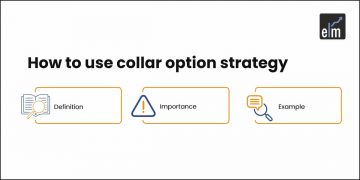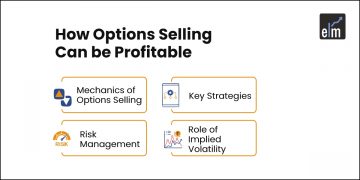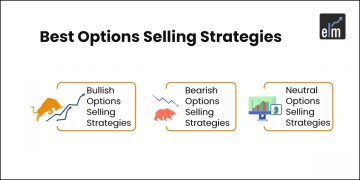Just as every individual possesses a unique personality, every trader has their preferred trading style. For those who value stability and a calm pace, positional trading is a perfect match. However, for traders who thrive on adrenaline, quick decision-making, and the fast-paced action of the markets, scalping stands out as an exhilarating and potentially rewarding choice.
Scalping is not just a trading strategy; it’s a mindset—a commitment to capturing small, consistent profits in the shortest possible time frame. Whether you’re a seasoned trader looking to diversify your strategies or a beginner eager to explore dynamic trading styles, scalping can be your key to unlocking rapid gains.
Scalping is a trading style that’s all about making the most of the market’s daily moves. Instead of waiting for big price changes, scalpers focus on small, quick trades throughout the day.
This means more chances to earn profits as they take advantage of even the tiniest price movements.
But Remember!!
Accuracy is the key to scalping.
In the world of scalping, precision isn’t just important—it’s everything. Scalpers rely on small, consistent profits from each trade, which means even a single misstep can erase the gains from multiple successful trades. To thrive in this high-stakes trading style, having a well-defined and disciplined approach is non-negotiable.
In this blog, we’ll explore some of the most effective scalping trading strategies designed to help traders capitalize on intraday market volatility and maximize their profit potential.
5 Scalping Trading Strategies
Here are some scalping trading strategies that will help you to generate higher returns in the market-
Price Action Scalping Strategy
Price action trading strategy mainly focuses on analyzing price movement without using any other technical indicators.
Traders look for key levels, price patterns ( double bottom, head and shoulder patterns ), support and resistance levels to make scalping trading decisions.
Suppose, in the 15-minute chart, we notice a double bottom pattern taking place, like in the 15- minutes charts of Life Insurance Corporation of India :
A breakout from the neckline with volume will confirm an entry in this scalping trading strategy. The stop-loss can be placed below the second bottom of the pattern.
CPR Scalping Strategy
CPR (Central Pivot Range) is an intraday indicator especially used for scalping strategies. It helps to identify potential key levels for the day.
It is calculated using the previous day’s high, low, and close prices, as shown below –
Pivot point = (High + Low + Close) / 3
Top Central Pivot Point (BC) = (Pivot – BC) + Pivot
Bottom Central Pivot Point (TC) = (High + Low) / 2
The Pivot Point acts as the key level for scalpers. If the price is above the CPR level and forms a bullish candle, it could be a potential buying opportunity.
You can place a buy order above the high of the bullish candle. Your target could be the R1 or R2 level.
If the price is below the CPR level and forms a bearish candle, it could be a potential selling opportunity. You can place a sell order below the low of the bearish candle.
Set your stop-loss above the high of the bearish candle or above the R1 level. Your target could be the S1 or S2 level.
VWAP Scalping Strategy
The VWAP (Volume Weighted Average Price) is a powerful tool for scalping because it represents the average price a stock has traded at throughout the day, adjusted for volume.
Scalpers use VWAP to gauge whether the market is trending or consolidating. VWAP offers a reliable entry/exit point, helping scalpers stay aligned with intraday momentum.
Scalpers can enter into a trade when the price is above VWAP and they can exit the trade the price is below VWAP.

Stop Loss can be placed slightly above or below the VWAP, depending on your trade direction.
This strategy helps traders trade with the market’s intraday trend, utilizing VWAP as a key reference point.
Open High Scalping Strategy
Launch the StockEdge app and click on the Trending Stocks icon to see the list of Price moves. By default, it shows the list of top gainers in the market.
First, select a stock from the trending stocks section and open up a chart for a 15-minute time frame.
Mark the highs and lows of the first 15-minute candle and convert the chart into 5 min.
Once the stock gives a 5-minute closing above the high of the 15-minute candle, enter into a long trade and vice versa if it breaks below the low of that 15-minute candle.
You can place your stop loss as the previous candle’s low on a 5-minute chart, and the take profit will be 1.5x that of your stop loss.
The main objective of this strategy is to ride the ongoing momentum in the stock, and you may keep trailing your stop loss.
Candlestick Pattern Scalping Strategy
This strategy uses candlestick patterns like Doji, Engulfing, and Hammer to predict short-term price movements. Scalpers look for these patterns near support or resistance levels for quick trades.
- Bullish Candlestick Patterns: Scalpers can use these specific patterns, such as Hammer and Bullish Engulfing patterns, to enter buy trades.
- Bearish Candlestick Patterns: Scalpers can use these patterns to short-sell (e.g., Shooting Star, Bearish Engulfing).
Scalpers can exit when the price reaches the next resistance level or after a set profit target (e.g., 1:1 risk-reward). Scalpers can place the stop-loss just below the low/high of the candlestick pattern.
Suppose a Bullish Piercing pattern appears in the 15-minute chart at ₹200, which is also a support level. Scalpers can place a buy order and exit when the price reaches ₹203, as shown below in the 15-minute charts of Shipping Corporation of India Ltd.-
Additional Tip – Leveraging Open Interest (OI) for Success in Scalping.
Open Interest (OI) is a powerful tool that scalpers can incorporate into their trading strategies to enhance decision-making and improve trade outcomes. By analyzing changes in OI, scalpers can gain valuable insights into market sentiment and momentum, helping them identify optimal entry and exit points with greater accuracy.
Rising OI: Indicates increased participation in the market, often signalling a continuation of the current trend. Scalpers can use this as a cue to ride the momentum and maximize short-term gains.
Declining OI: Suggests waning participation, which could point to trend exhaustion or potential reversals. This helps scalpers avoid trades in weakening trends.
The strike prices with the maximum OI in options act as psychological levels of support and resistance. Scalpers can use these levels to time their trades effectively, entering near support and exiting near resistance for higher profitability.
By integrating OI data with technical indicators or price action strategies, scalpers can fine-tune their approach. For instance, a rising OI combined with a breakout signal strengthens the probability of a successful trade.
Challenges of Scalping Trading
While scalping can be a profitable strategy that involves taking advantage of small price movements, it also comes with several challenges:
High-Frequency Trading Competition
Scalpers often compete with high-frequency trading algorithms, which can execute trades much faster, making it difficult to capitalize on fleeting opportunities.
Also, large orders can significantly impact the market, leading to adverse price movements and slippage.
Emotional Stress
Scalping requires constant market monitoring, which can be mentally draining. Making rapid decisions under pressure can lead to emotional trading and impulsive actions. Also, the pressure to constantly monitor the market can lead to impulsive decisions.
Conclusion
Scalping trading strategies, as discussed above, can help to capitalize on short-term market opportunities. With the help of these strategies, traders can enhance profitability while reducing risk. One should always complement scalping trading strategies with sound market analysis and risk control measures for higher returns.
Also Read: Top 5 Scalping Trading Indicators
Frequent Asked Questions
1. Is Scalping Trading Profitable?
Yes, scalping can be profitable when executed with a well-planned strategy and effective risk management. However, it requires consistent monitoring. Scalping is best suited for those traders who can handle high-frequency trades.
2. Which timeframe is best for scalping?
The best time frames for scalping are 1-minute to 5-minute charts. Pairing these with larger timeframes, like 15 minutes, can help in confirming the trends.
3. Is scalping good for beginners?
Scalping can be challenging for beginners due to its fast-paced execution. Positions Trading and Swing Trading are best suited for beginner traders.







